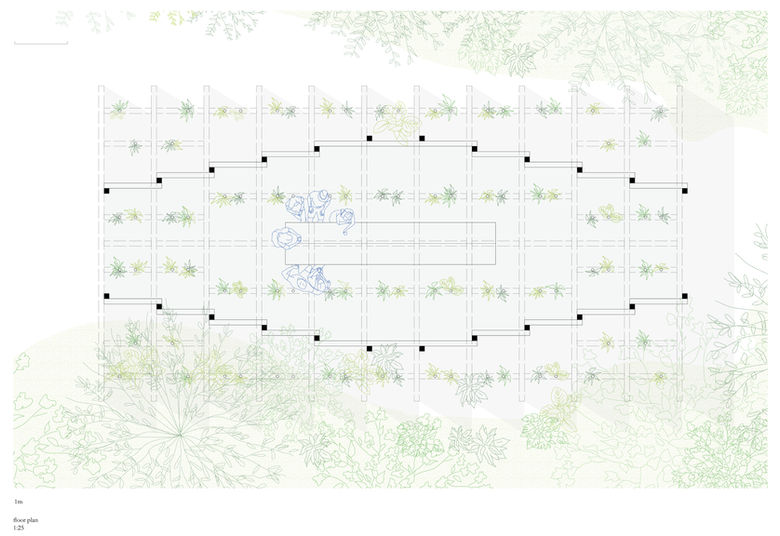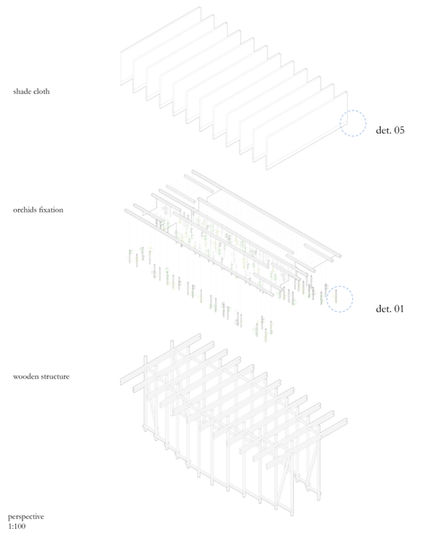location
wabi house. mexico
project
2021
architecture
messina | rivas
ayako
helena meirelles
zebulum
collaborator
bruno caio . images
luciano zandoná . biologist
design with orchids
“Interrogating plants means understanding what it means to be in the world”
(Emanuele Coccia, The life of plants)
What should we ask orchids? One of the conditions of epiphytic plants, like most orchids, is their interdependence, that is, their ability to coexist with other species, not as a parasite, but as a companion species. This is what we learn from them: to establish kinship between species.
Our goal is no longer to domesticate plants, but to cultivate them, which implies mutual growth. That is why the project must allow for openings to a plurality of knowledge so that it can be affected by the intelligence of plants. Understanding how orchids establish kinship relationships with other species as a technique for creating alliances makes us think about what decisions should be made for the Orchid Pavilion at Casa Wabi.
To simulate the tropical atmosphere, we need to create an open shade. To do this, like trees in the forest, we imagine a wooden structural system consisting of twelve frames that support vertical shade cloths tensioned with sand. These frames are stabilized by crossbeams that hang dynamic poles where the orchids must be fixed as they used to hug the trees. Under the shade, the position of the pillars creates a clearing in the space to allow educational activities that, among other things, stimulate cultivation as a process to establish relationships with other species.












